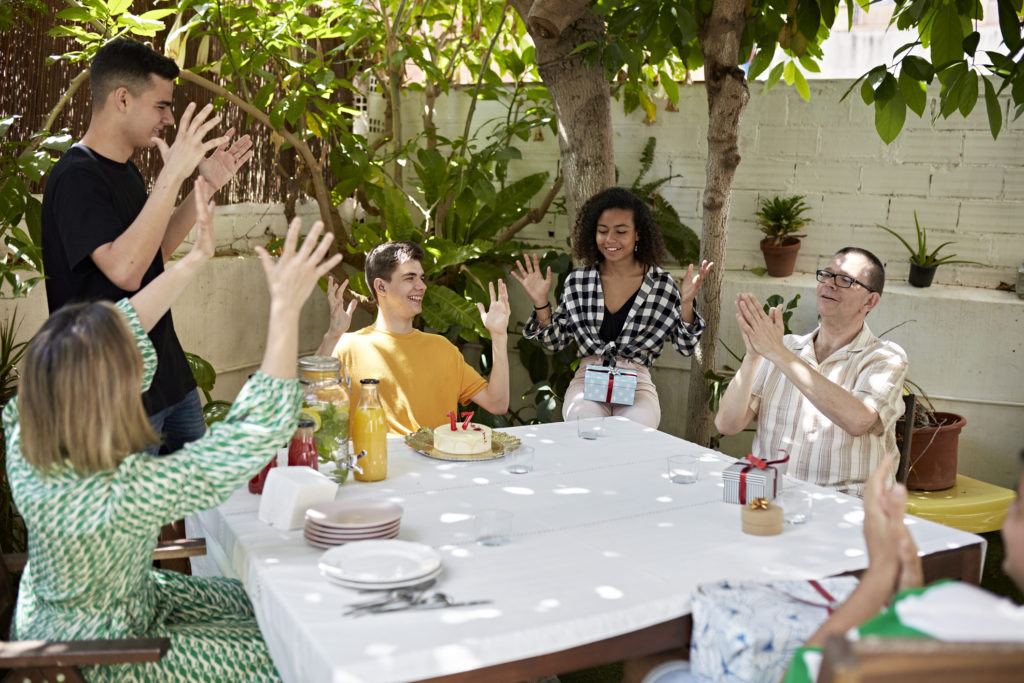What is Deaf culture?
Norms and Traditions
Different cultural groups may have different perspectives and different ways of life. This includes norms and traditions when it comes to communication, relationships, education, and social gatherings. Let’s review some norms and traditions in the Deaf community.
Some common ways to get a Deaf individual’s attention include tapping their shoulder, flashing the lights on and off, or knocking on a table to create a vibration that will prompt them to look your way.
A sign given to someone by a Deaf individual. The sign is often based on a characteristic or physical feature that relates to the person’s identity.
Storytelling is especially important to the Deaf community because there is no written form of American Sign Language. Through the use of complex dialogue, facial expressions, eye gaze, visual space, and role-switching, Deaf individuals can portray stories with rich contextual details. Stories are a way of preserving folklore and history.
Studies show that when Deaf people congregate, they prefer to do so in the kitchen. This is due to the fact that kitchens typically offer close proximity, bright lights, and open spaces – all factors which make for an ideal environment for visual communication.
Deaf individuals cherish their time together as a community and may take additional time to say goodbye to other Deaf individuals before heading back out to a predominantly hearing world.
It’s common for conversations amongst Deaf individuals to be direct and candid. Candor is common in the Deaf community because sign language is very visual in nature. A Deaf individual may ask “Why you are late?”, whereas in spoken English a hearing individual may say “Were you delayed in traffic?”
Humor is a way that cultures can share their perspective of the world and make connections. In the Deaf community, humor often relies on language-based knowledge and play or the Deaf experience.
Oftentimes Deaf individuals are born to hearing parents and are the only Deaf person in their family. Deafness can also be generational. When planning for children, many Deaf people desire for their children to also be Deaf and share the Deaf experience.
The Deaf community shows appreciation by waving hands in the air as opposed to clapping.

It is essential that the Deaf Community be recognized for their accomplishments and the barriers they continue to overcome. From Deaf actors winning Oscars, to participating in the Olympics and starring on a television series, these achievements are celebrated with great enthusiasm among the Deaf community.
In all of these areas, it is important to remember that Deaf people have the same potential and capabilities as hearing people and should be respected and provided the same opportunities. Their perspective, experience, and norms, however, can be very different.
You got it!
All of these answers describe ways to respect, celebrate, and embrace Deaf culture.